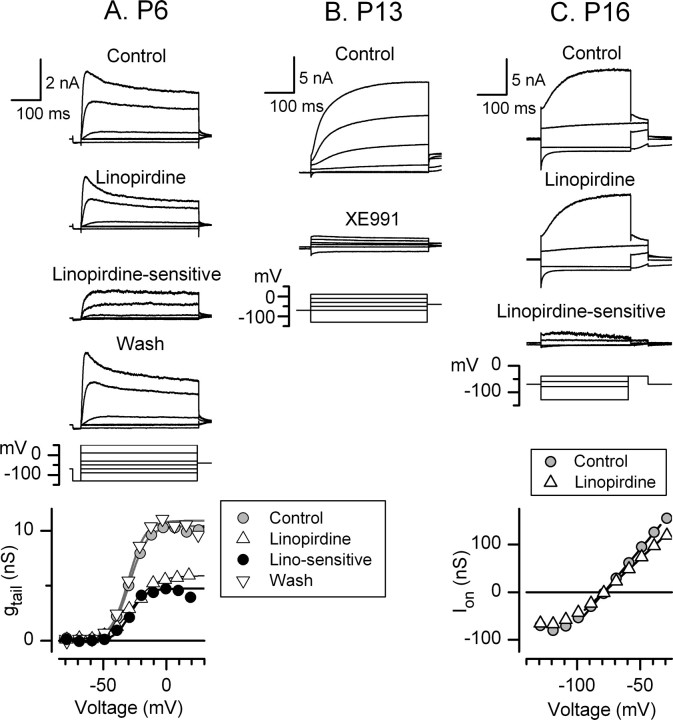Figure 6.
Effects of KCNQ channel blockers on the currents in type I cells at different ages. A, The KCNQ blocker linopirdine (10 μm) reversibly reduced gmax of the K current in a P6 type I cell by 43% without affecting V1/2 (V1/2, S, and gmax values: Control, −29 mV, 7.1 mV, 9.1 nS; Linopirdine-sensitive, −29 mV, 6.1 mV, 4.2 nS; Linopirdine-insensitive, −27 mV, 9.0 mV, 5.1 nS). B, The KCNQ blocker XE991 (10 μm) blocked most of the current in a P13 type I hair cell (control V1/2, S, gmax values, −58 mV, 8.8 mV, 47 nS). The residual current appears to be leak, in that the tail current activation curve was completely blocked. We do not show the activation curves because short voltage steps do not produce an accurate activation curve (Wong et al., 2004). C, In a P16 type I cell with a large negative conductance, linopirdine (10 μm) blocked 23% of the current evoked at the onset of steps from the holding potential, −69 mV (23% of gHP).

